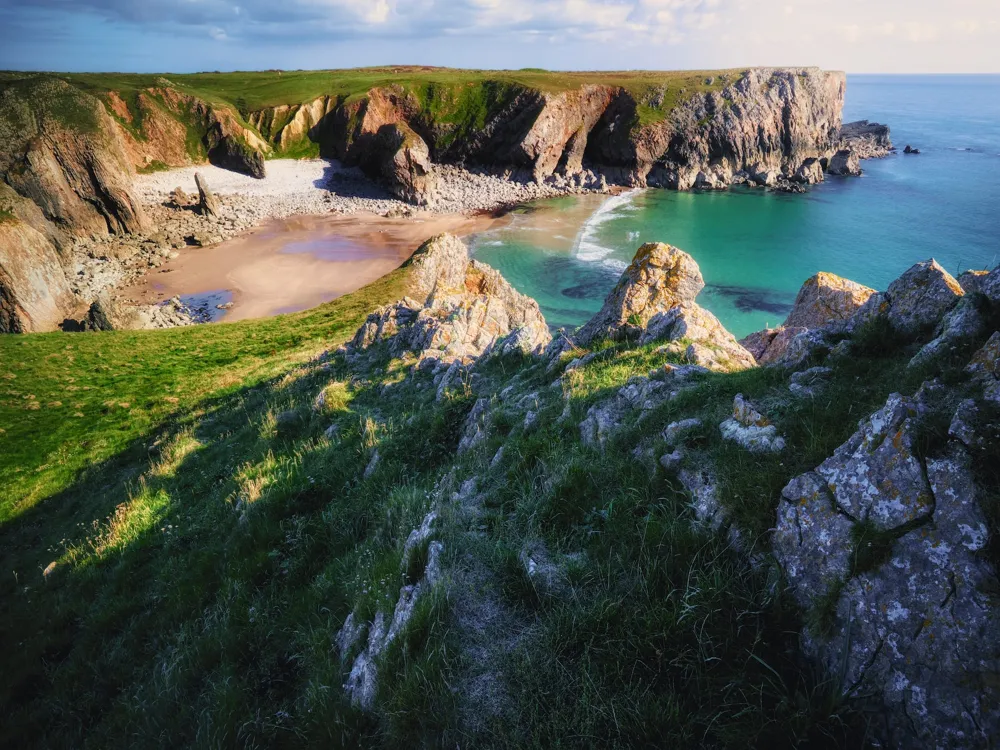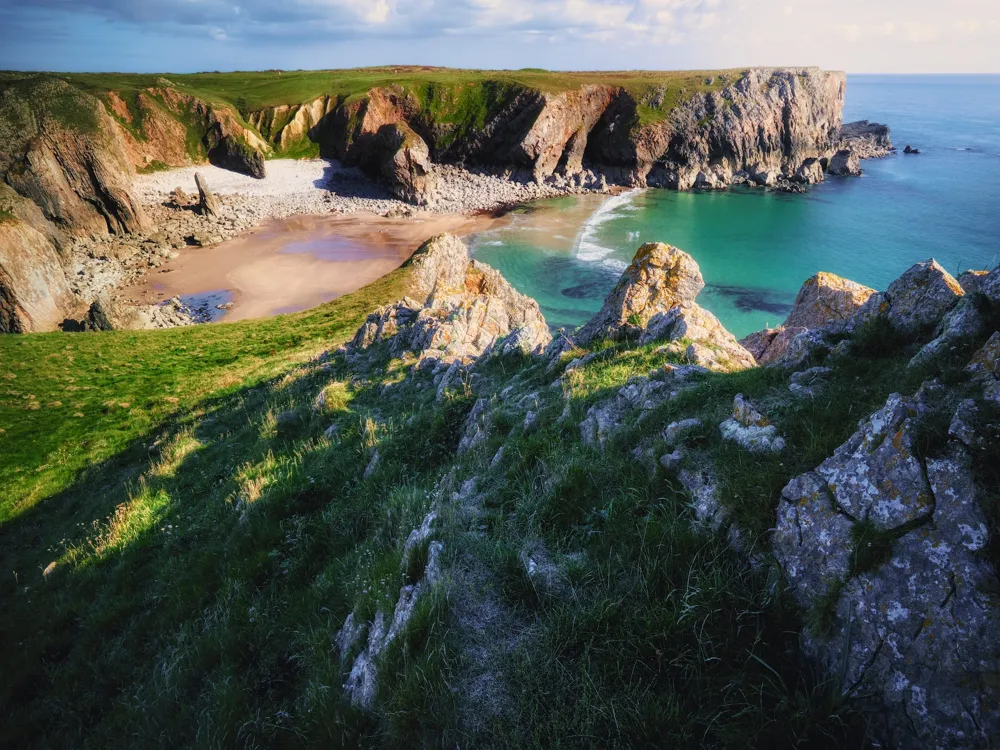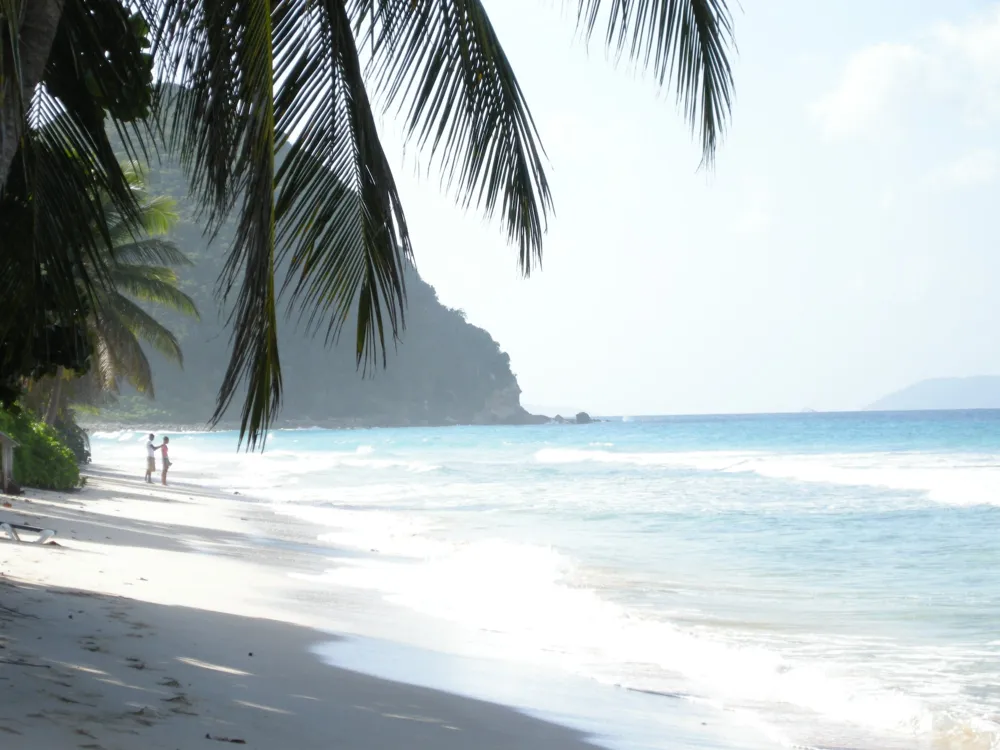Halong Bay, a UNESCO World Heritage Site and one of the most iconic destinations in Vietnam, is renowned for its breathtaking natural beauty. This magnificent bay, located in the Gulf of Tonkin, spans an area of around 1,553 square kilometers and is dotted with approximately 1,600 limestone islands and islets. The spectacular seascape of limestone pillars is the result of millions of years of geological evolution, creating an awe-inspiring natural wonder. Halong Bay's name, which translates to 'Descending Dragon Bay,' is derived from a legend that adds a mystical layer to its natural beauty. According to local folklore, dragons were sent by the gods to protect Vietnam from invaders, and they spit jewels and jade into the sea to form a natural fortress. The beauty of Halong Bay isn't just in its landscapes but also in its rich biodiversity. The area boasts diverse ecosystems, including coral reefs, freshwater swamp forests, and dense mangrove forests, making it a haven for many species of plants and animals. The bay's waters are home to a variety of fish and marine life, including the endangered Halong Bay shrimp. Additionally, the bay's larger islands have extensive cave networks, with stunning stalactites and stalagmites formations that add to the bay's mystical allure. For those interested in cultural experiences, Halong Bay offers insights into the lives of local communities. Fishing villages, such as Vung Vieng and Cua Van, float serenely on the bay, preserving ancient ways of life. Visitors can witness the daily lives of fishermen and even participate in traditional fishing techniques. These unique cultural interactions, combined with the natural beauty of the bay, create an unforgettable experience for any traveler. The architecture of Halong Bay is not about man-made structures but the incredible natural formations that have stood the test of time. These limestone karsts and islands have unique shapes and sizes, often compared to various mythical creatures and everyday objects. The Sung Sot Cave, also known as the Surprise Cave, is a prime example of Halong Bay's natural architectural wonders. With high ceilings, extensive stalactites, and stalagmites formations, it creates an otherworldly experience for visitors. Another significant aspect of the architecture of Halong Bay is the floating villages. These villages, built on rafts and boats, are a testament to the adaptability and resilience of the local fishing communities. The houses, schools, and even markets float on the calm waters of the bay, creating a unique water-based lifestyle. This remarkable adaptation to the marine environment shows a harmonious blend of culture and nature. Each island and cave in Halong Bay has its own story, contributing to the bay's magical charm. For instance, Dau Go Island, with its ancient grotto, is steeped in legend and is a visual representation of Vietnam's history and mythology. Similarly, Ti Top Island offers not only a beautiful beach but also a panoramic view of the bay, showcasing the grandeur of this natural masterpiece from a bird's-eye perspective. The architectural significance of Halong Bay extends beyond its natural formations. The design of the traditional junk boats, with their distinctive red sails, complements the natural scenery of the bay. These boats, used for both fishing and tourism, are a cultural symbol of Vietnam and add an element of traditional elegance to the bay's modern appeal. The best time to visit Halong Bay is during the spring (March to May) and autumn (September to November) months. During these periods, the weather is pleasant with less likelihood of rain, allowing for clearer views of the bay's stunning landscapes. Selecting the right cruise is crucial for an optimal experience in Halong Bay. Consider factors like the length of the trip, the size of the boat, and the included activities. Luxury cruises offer more amenities and privacy, while budget cruises are great for socializing and cost-effectiveness. When packing for Halong Bay, include light and comfortable clothing, swimwear, sun protection, a hat, and sturdy shoes for cave explorations. Don't forget your camera to capture the stunning scenery and binoculars for bird watching and sightseeing. Be mindful of local customs and traditions. Show respect to the fishermen and villagers, and avoid littering to preserve the bay's natural beauty. Participating in eco-friendly activities and choosing responsible tour operators contribute to sustainable tourism in Halong Bay. Halong Bay is accessible from Hanoi, the capital city of Vietnam, and the journey takes approximately 3-4 hours by road. Visitors can opt for shuttle buses, private cars, or even seaplanes for a quicker and more scenic route. The nearest airport is in Haiphong, which is well connected to major cities across Vietnam and some international destinations. From Haiphong, Halong Bay is just a short drive away. Alternatively, for those seeking a more adventurous route, train travel to nearby cities and a subsequent car journey to Halong Bay is also an option.Overview of Halong Bay
Architecture of Halong Bay
Tips When Visiting Halong Bay
Best Time to Visit
Choosing a Cruise
Packing Essentials
Respecting Local Culture and Environment
How To Reach Halong Bay
Cua Van Floating Village
Halong Bay
₹ 15,260 onwards
View halong-bay Packages
Halong-bay Travel Packages
View All Packages For Halong-bay
Top Hotel Collections for Halong-bay

Private Pool

Luxury Hotels

5-Star Hotels

Pet Friendly
Top Hotels Near Halong-bay
Other Top Ranking Places In Halong-bay
View All Places To Visit In halong-bay
View halong-bay Packages
Halong-bay Travel Packages
View All Packages For Halong-bay
Top Hotel Collections for Halong-bay

Private Pool

Luxury Hotels

5-Star Hotels

Pet Friendly






















